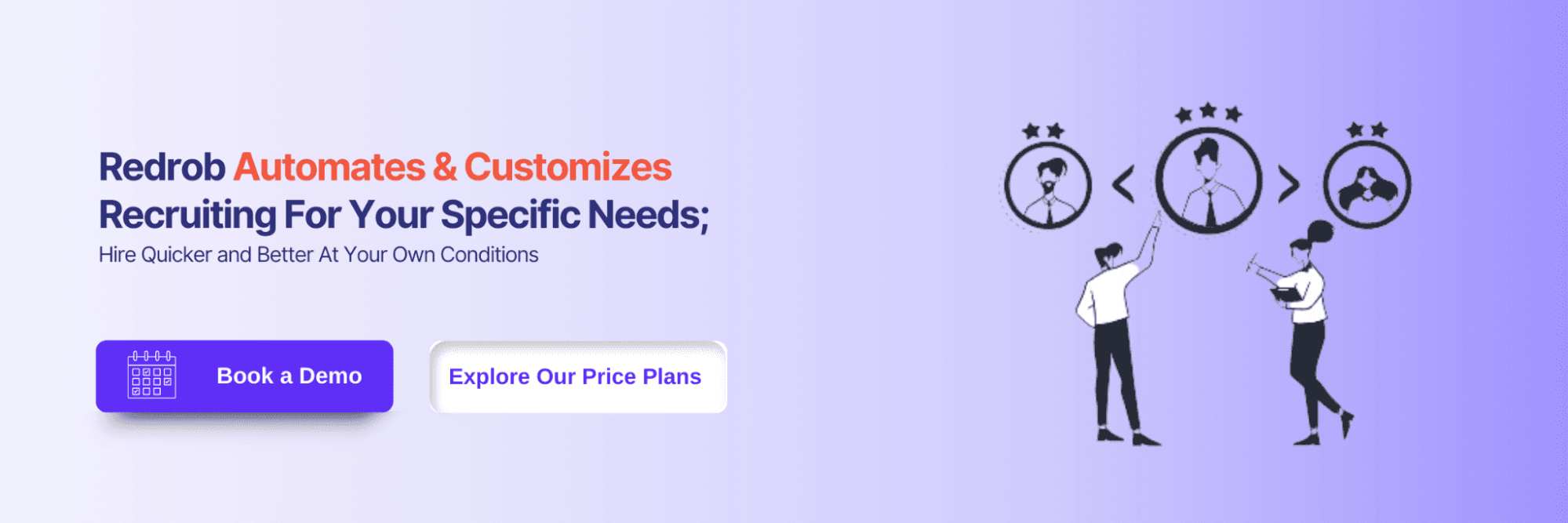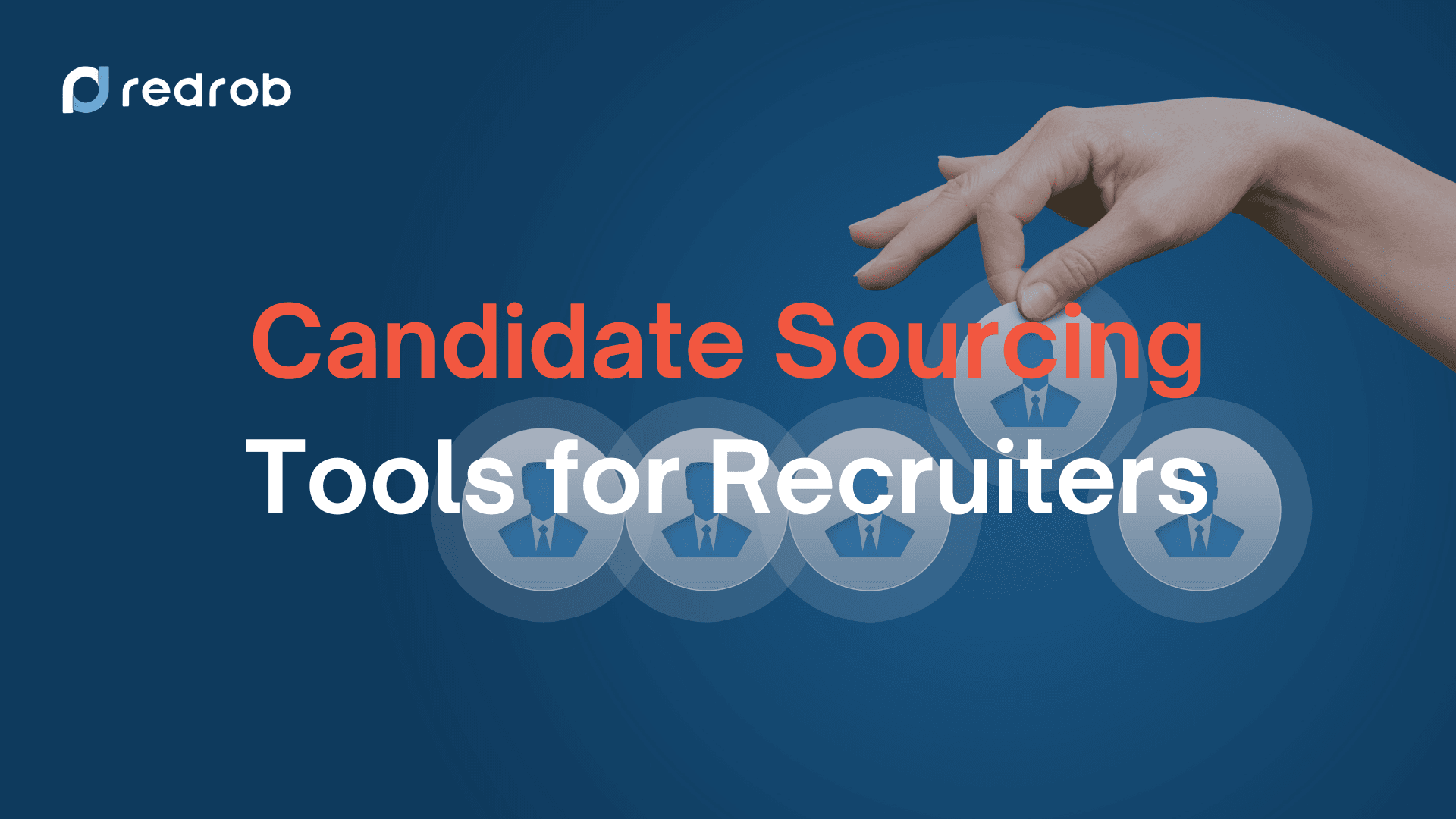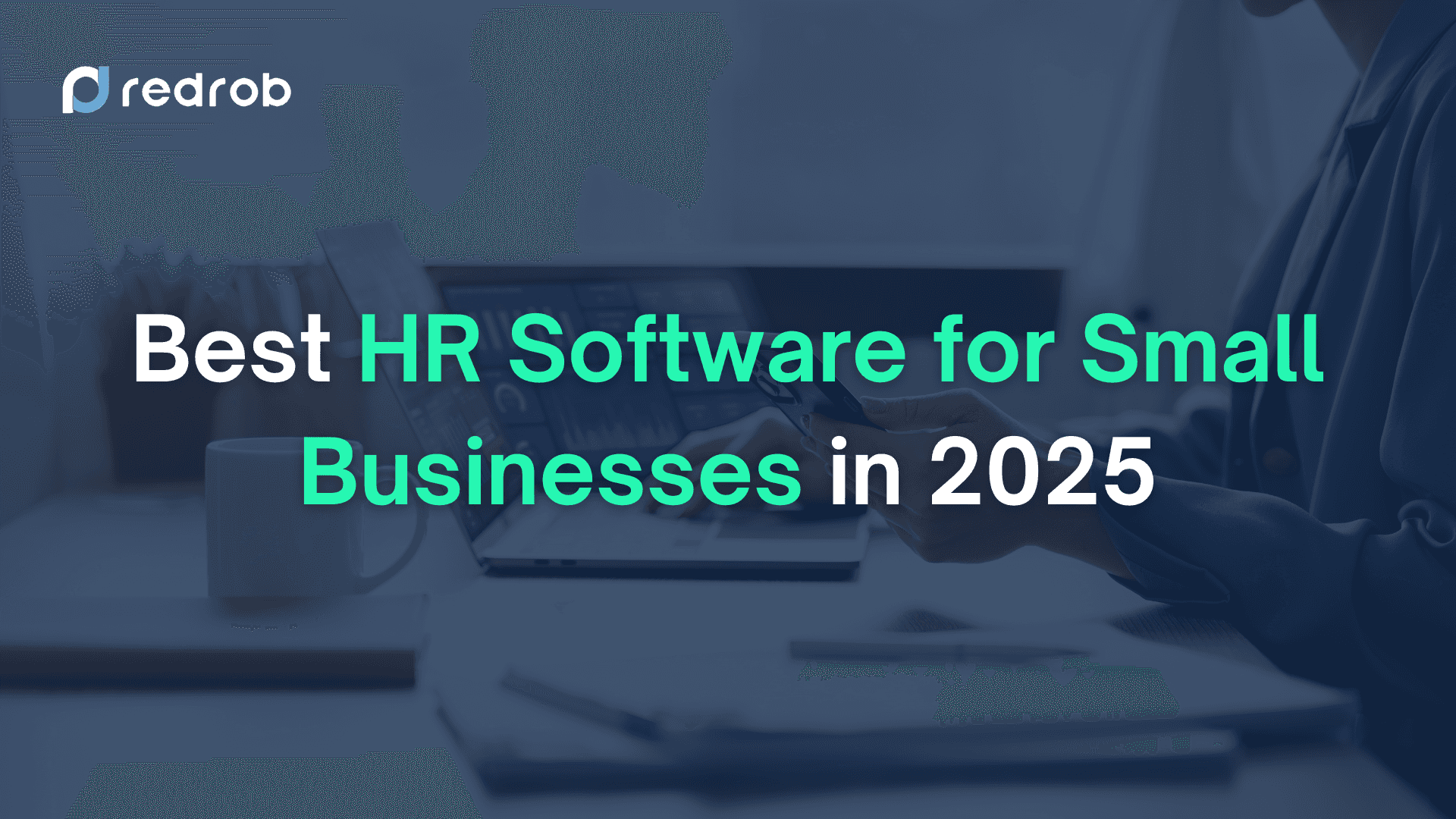Candidate Sourcing Tools
10 min read
•
Sep 19, 2024

Soumyata Singh
As a recruiter you have many things to deal with. One of them is sourcing suitable candidates. We get you. There must be many moments when you feel the extreme need of having an accessible ‘directory’ that connects you with the best candidates in no time. Well, there are some excellent candidate search tools to do this for you.
As per various surveys, 9 out of every 10 recruiters say that finding suitable candidates is one of the major challenges they face. However, with the best candidate sourcing tools, you get access to the best candidate profiles that are perfect to fill up vacant job roles in your organization.
In this blog we have listed the best candidate sourcing tools and some cues for how to choose a tool for your business. Moving further, let’s begin with some basics.
What Are Candidate Sourcing Tools?
Candidate search tools are software solutions designed to help you find and connect with potential job-seeking candidates. These tools allow you to search for candidates efficiently and build a talent pool faster. Whether you're filling a specific role or building long-term pipelines, candidate sourcing tools streamline the process. Their purpose is to simplify talent discovery by using databases, networks, and online platforms.
Types and Use Cases
There are several types of candidate search tools, each suited for different recruitment needs.
Job Board Databases: These tools provide access to a large database of resumes. You can use them to search for active job seekers. Examples include platforms like Indeed and Monster.
Social Media Search Tools: Social platforms, like LinkedIn, offer search functions tailored for recruitment. You can reach both active and passive candidates who may not be actively looking but are open to opportunities. LinkedIn Recruiter is an excellent example of this.
Boolean Search Tools: These tools use specific search operators to filter results. They help you find profiles that meet specific criteria, such as skills or experience. Recruit'em is a well-known tool for this purpose.
AI-powered Sourcing Tools: These tools analyze large sets of data to recommend candidates that best fit your job descriptions. They use algorithms to match profiles to job requirements, often delivering faster and more accurate results. OctoHR and HireEZ are popular AI-powered options.
These tools are valuable for various stages of the recruitment process. You might use them to find candidates early in the hiring process or to build pipelines for future roles.
As we proceed, let's explore the inner workings and benefits of candidate search tools in more depth.
How Do Candidate Sourcing Tools Work?
Candidate search tools use various methods to help you find the right candidates quickly. Understanding how they work can improve your recruitment process and efficiency.
Traditional vs. AI-powered Sourcing
Traditional candidate search tools rely on basic search functions. You manually input keywords to find profiles that match. This method is simple but often time-consuming.
AI-powered candidate sourcing tools take things further. They analyze huge data sets to predict which candidates fit your needs best. Tools like HireEZ can automate much of the work, identifying potential matches based on skills, experience, and even behavior. AI tools can speed up your search and improve accuracy by 30-50%, according to studies.
Criteria for Candidate Search
You usually filter candidates based on specific criteria. These include skills, job titles, location, and experience level. You can also narrow your search by education or even specific industries. For example, when using LinkedIn Recruiter, you might filter candidates with 5+ years of experience in software development.
Basic Keyword-matching vs. Context-matching Search
Basic keyword-matching search tools look for exact matches between your job description and a candidate’s resume. These are effective but can miss out on candidates who use different terminology.
Context-matching search goes beyond keywords. AI-powered tools, like OctoHR, focus on the meaning behind words. This results in a more precise match, as it considers synonyms and related concepts. Context-matching can improve candidate quality and retention rate significantly.
Integration with Applicant Tracking Software (ATS)
Candidate search tools often integrate with your ATS. This allows for seamless data transfer and workflow management. For instance, tools like Pipl can feed candidate data directly into your ATS, so you don’t need to enter details manually. Integration ensures that all information stays organized and easily accessible.
Redrob’s self-developed ATS can save you 60% of candidate screening time. Learn how it works.
Workflow and Data Synchronization
Integration also means smooth workflow and data synchronization. Candidate search tools automatically sync with your ATS, keeping all data up-to-date. When you source a candidate using ContactOut, their profile gets added to your ATS instantly. This avoids duplication and ensures your hiring team is always aligned.
Benefits of Integrated Systems
Integrated systems save time and reduce errors. When your candidate search tools work with your ATS, you spend less time entering data and more time interviewing. You also ensure that every candidate’s information is consistent across platforms. Studies show that integrated recruitment systems improve hiring efficiency by up to 40% (time-to-hire and cost-per-hire).
Now that you know how these tools work, let's dive into the top candidate sourcing tools you can use.
9 Best Candidate Sourcing Tools
Access to the right candidate sourcing tools can transform your recruitment process. Below are some of the top options available, highlighting their key features and practical uses.
1. Redrob
Redrob is a versatile candidate search tool designed to streamline your recruitment process. It combines simplicity with powerful features to help you source top talent efficiently. It’s one of the best recruitment platforms in India to help you onboard reliable candidates faster.
Top Features
Comprehensive Search Filters: Redrob allows you to refine searches using criteria like skills, experience, and location.
AI-Powered Matching: The tool uses AI to recommend candidates who best fit your job requirements.
Talent Pipeline Management: Track candidates through every stage of recruitment with an intuitive dashboard.
Integration with ATS: Redrob integrates easily with many popular ATS platforms for seamless data syncing.
Customizable Templates: Create personalized outreach templates for consistent candidate engagement.
ProsCons User-friendly interface makes it easy for you to get started without extensive training.AI-driven matching improves candidate relevance by up to 40%.Customizable filters help you find the exact candidates you need quickly.ATS integration reduces manual tasks by syncing data across platforms.Affordable pricing, making it accessible for small to medium businesses.Limited advanced features compared to more established candidate search tools.AI matching can sometimes yield less relevant results, requiring manual adjustments.The free plan offers basic functionality, making the paid version necessary for larger teams.
Free Plan
Redrob offers a free version with limited search and AI matching capabilities. It’s best suited for small businesses or recruiters handling a low volume of roles. Advanced features, such as ATS integration and pipeline management, are available in the paid plans.
Best For
Redrob is ideal for small to medium businesses that need a cost-effective and easy-to-use candidate search tool. It's perfect if you're looking for a solution that balances simplicity with powerful AI features and ATS integration.

2. LinkedIn and LinkedIn Recruiter
LinkedIn is one of the most popular platforms for professional networking and recruitment. LinkedIn Recruiter takes hiring to the next level, offering advanced tools for sourcing top talent. These candidate search tools are a go-to for recruiters looking to fill various roles.
Top Features
Advanced Search Filters: LinkedIn Recruiter lets you filter candidates by location, skills, industry, and more.
InMail Messaging: You can send direct messages to potential candidates, even if you're not connected.
Talent Pipeline: The tool allows you to build and manage candidate pipelines for future roles.
Integrated Analytics: Track response rates and see which messages lead to hires.
Recommendations: AI-driven candidate recommendations help you discover profiles you might miss manually.
Pros Cons
Access to over 900 million users worldwide.Excellent for passive candidate sourcing, especially in industries like tech and finance.Seamless integration with most ATS platforms.Advanced filters make it easy to target specific candidate pools.InMail provides a direct line to candidates, improving response rates.
LinkedIn Recruiter is expensive for small teams or startups.Limited data on candidates outside their LinkedIn profiles.The sheer number of candidates can make it harder to narrow down the best fits.Some candidates receive too many messages, leading to lower engagement.
Free Plan
LinkedIn offers a basic free plan where you can browse profiles and send connection requests. However, LinkedIn Recruiter is a paid tool, offering more advanced features and better candidate reach. For smaller teams, LinkedIn Premium might be a more affordable option, offering some recruiter-like features.
Best For
LinkedIn and LinkedIn Recruiter are best for companies of all sizes that need access to a large talent pool. These tools excel in passive candidate sourcing, particularly in professional fields like tech, finance, and management. It's also ideal for those looking to integrate with ATS systems for streamlined hiring.
3. Recruit’em
Recruit’em is a candidate search tool that uses advanced Boolean search techniques to help you find candidates across platforms. It’s a powerful tool for recruiters who want to tap into public profiles without complicated software.
Top Features
Boolean Search: Recruit’em allows you to create complex Boolean strings, helping you filter results accurately.
Multi-platform Search: It scans multiple websites, including LinkedIn, Twitter, and GitHub, to find talent.
Custom Search Filters: You can tailor searches by location, job title, company, and more.
Free to Use: Unlike most candidate search tools, Recruit’em offers a range of features at no cost.
Simple Interface: The tool is easy to use, even if you’re not an expert in Boolean search.
ProsCons It’s free to use, making it ideal for smaller teams and startups.Boolean search helps you find targeted candidates with specific skill sets.Works well with passive candidate searches, especially on platforms like GitHub and Twitter.The tool is easy to integrate into existing recruitment processes. Limited to public profiles, so it may not show as much detail as paid tools.You need to be familiar with Boolean search strings for the best results.No direct integration with ATS platforms, meaning you may need manual data entry.Recruit’em can’t search behind login-based platforms, limiting its reach compared to paid tools.
Free Plan
Recruit’em is entirely free. You can use all its features without any cost. This makes it one of the most accessible candidate search tools, especially for small businesses or freelancers.
Best For
Recruit’em is best for smaller businesses or solo recruiters who want a cost-effective way to source candidates. It’s perfect for those who are comfortable using Boolean searches and don’t need access to premium profiles. It’s also great if you’re looking for niche candidates on public platforms like GitHub or Twitter.
4. OctoHR
OctoHR is a modern candidate search tool that leverages artificial intelligence to optimize your recruitment process. It offers a range of features to help you source the best candidates efficiently.
Top Features
AI-driven Search: OctoHR uses AI to match candidates based on context, not just keywords.
Candidate Ranking: It ranks candidates according to relevance, experience, and skills, improving accuracy.
Automated Outreach: You can send personalized messages to candidates directly from the platform.
Customizable Pipelines: It allows you to create pipelines tailored to your recruitment strategy.
Analytics Dashboard: You get insights into candidate sourcing, response rates, and hiring timelines.
ProsCons The AI-powered matching improves candidate relevance.It offers automated messaging, saving you time on outreach.Real-time data helps you adjust your recruitment strategy quickly.Custom pipelines allow you to organize candidates by role, location, or experience level.OctoHR integrates with most ATS platforms, ensuring a smooth recruitment process. OctoHR can be costly for smaller teams or startups.AI matching is not always 100% accurate, especially for niche roles.The tool might be overly complex for beginners or small-scale recruiters.It requires consistent training to improve its AI algorithms, which can be time-consuming.
Free Plan
With OctoHR you get a limited free plan with basic candidate search functionality. However, most of its advanced features, like AI-driven search and automated outreach, are part of the paid subscription. The free version is more suited for small teams with simple needs.
Best For
OctoHR is best for mid-to-large-sized companies that handle high volumes of candidates. Its AI-driven search and ranking make it ideal for industries like tech and healthcare, where precision is key. It’s also a good choice for those who want detailed analytics to refine their recruitment strategy.
5. ContactOut
ContactOut is a powerful email-finding tool that helps recruiters access personal contact information for candidates. It’s widely used alongside other candidate sourcing tools to directly reach potential hires.
Top Features
Email Finder: ContactOut gives you access to personal emails and phone numbers of candidates.
Browser Extension: The tool integrates with Chrome and lets you find contacts directly from LinkedIn profiles.
Database Access: It offers a database of over 1.23 billion email addresses and contact details.
CRM Integration: You can export candidate information into your CRM or ATS systems.
Customizable Templates: Use built-in email templates to quickly contact potential candidates.
ProsCons Accurate contact details for hard-to-reach candidates.Simple interface that integrates smoothly with LinkedIn.Boosts response rates since you reach candidates directly through personal emails.Extensive database covering over 75% of the workforce.Saves time with pre-built email templates and easy CRM integration. Limited free searches; the tool becomes costly for higher usage.Focuses mainly on finding contact information, not deep talent sourcing.Outdated contacts may occasionally appear in the database.Not ideal for active sourcing beyond retrieving contact details.
Free Plan
When using ContactOut, you get a free plan with limited searches. It lets you perform about 50 searches per month. This is enough for individual recruiters but may be restrictive for larger teams.
Best For
ContactOut is best for recruiters who need personal contact details to reach candidates directly. It’s perfect for sourcing hard-to-reach talent, especially when combined with other candidate search tools like LinkedIn. This tool is ideal for filling niche roles or reaching out to passive candidates.
6. HireEZ
HireEZ is one of the top AI-driven candidate search tools. It streamlines the hiring process and helps you find talent more efficiently. Designed for both small businesses and large enterprises, HireEZ offers features that improve sourcing accuracy and save time.
Top Features
AI-Powered Search: HireEZ uses artificial intelligence to match candidates based on skills and experience.
Market Insights: It provides real-time data on salary expectations, hiring trends, and candidate availability.
Multi-platform Sourcing: HireEZ searches across 45+ platforms, including LinkedIn, GitHub, and social media.
Engagement Tools: The tool offers email templates and drip campaigns to keep candidates engaged.
ATS Integration: It integrates seamlessly with popular ATS platforms, streamlining your recruitment process.
Pros Cons AI-powered search boosts efficiency.Multi-platform sourcing ensures a diverse candidate pool from various industries.Built-in engagement tools help you maintain consistent communication with candidates.The market insights feature gives you an edge in offering competitive salaries.Integration with ATS systems reduces manual data entry and workflow gaps. HireEZ is a premium tool and can be costly for smaller companies.The tool requires a learning curve to fully understand its AI features.Some users report that the email engagement tools can be overly complex for smaller campaigns.It may not always pull the most updated profiles, especially from niche platforms.
Free Plan
HireEZ offers a free version that lets you use limited features. You get basic access to its AI-powered search and sourcing capabilities. However, you’ll need a paid plan to unlock features like market insights and ATS integration.
Best For
HireEZ is best for medium to large organizations looking for a comprehensive, AI-powered candidate sourcing tool. It's ideal for recruiters who handle a high volume of roles and need advanced tools to source, engage, and hire faster. The tool is perfect for teams that want real-time data to make informed hiring decisions.
7. Pipl
Pipl is one of the more specialized candidate search tools, offering deep web search capabilities. It allows you to source hard-to-find candidates by scanning social media profiles, blogs, and other online data that may not be visible through traditional search methods.
Top Features
Deep Web Search: Pipl goes beyond the surface web, searching databases, social media, and other deep sources.
Global Reach: It has access to global data, making it ideal for international recruitment efforts.
Contact Information: Pipl provides verified email addresses, phone numbers, and social media links for candidates.
Identity Resolution: The tool combines different data points to match profiles across multiple platforms.
API Access: For companies with advanced needs, Pipl offers API integration for seamless sourcing.
Pros Cons Access to deep web data, which gives you more candidate details than standard tools.Global reach makes it perfect for international recruitment.Verified contact details reduce the chance of outdated information.The identity resolution feature ensures accuracy by connecting fragmented online profiles.Pipl’s API integration allows for a custom, automated sourcing process. Pipl is costly and may not fit smaller recruitment budgets.It’s not focused solely on recruitment, so some features may be overkill.The tool’s interface is more complex than traditional candidate search tools.Pipl’s extensive data may include irrelevant results, especially in highly saturated markets.
Free Plan
Pipl doesn’t offer a free plan. However, it provides a trial option for users to test its features before committing to a paid plan. The trial includes limited access to deep web search and data extraction tools.
Best For
Pipl is best for large enterprises and recruitment agencies that need access to hard-to-find candidates. It’s especially useful for those looking for international talent or working on roles that require in-depth background checks. If you handle roles requiring complete and accurate contact data, Pipl’s deep web search capabilities will be a valuable asset.
8. SeekOut
SeekOut is an AI-powered candidate search tool that excels at finding diverse talent across various platforms. Its advanced search capabilities help you identify candidates beyond traditional job boards and LinkedIn, making it a popular choice for recruiters.
Top Features
Diverse Search Capabilities: SeekOut lets you search across LinkedIn, GitHub, and other platforms.
AI Matching: It uses AI to match candidates based on skills, experience, and job fit.
Talent Insights: Gain insights into talent pools, including diversity metrics and salary expectations.
Customizable Filters: Use advanced filters to narrow down your search by location, skills, and more.
Engagement Tools: Automate outreach with personalized messaging templates and follow-ups.
Pros Cons AI-driven search improves candidate matching accuracy.Provides valuable talent insights, helping you understand market trends and salary benchmarks.Advanced filters allow for precise candidate targeting, reducing the time spent on irrelevant profiles.The engagement tools help maintain consistent communication with candidates throughout the process.Easy integration with many ATS systems, streamlining your hiring workflow. SeekOut can be expensive, especially for small businesses.The tool requires some time to learn and use its full range of features effectively.Users might find the AI suggestions sometimes overly broad and needing refinement.Limited functionality in the free plan, making the paid version necessary for full features.
Free Plan
You get a free version with basic search features. This plan allows limited access to its candidate database and search capabilities. To fully utilize its advanced AI and engagement tools, you’ll need to opt for a paid subscription.
Best For
SeekOut is best for medium to large enterprises looking for comprehensive candidate search tools. It’s ideal if you need advanced AI capabilities and detailed talent insights to drive your recruitment efforts. The tool excels in environments where data-driven decisions and broad candidate sourcing are crucial.
9. Wellfound (AngelList Talent)
Wellfound, previously known as AngelList Talent, is a leading platform for startup job seekers. It's one of the best candidate search tools if you're hiring for tech roles or startups. Wellfound connects you with a vast pool of candidates eager to work in innovative and growing companies.
Top Features
Startup-Centric Focus: Wellfound specializes in helping startups find talent, focusing on tech and creative roles.
Candidate Profiles: You can access detailed candidate profiles, including work experience and personal projects.
Direct Messaging: Employers can directly message candidates, making communication swift and efficient.
Job Postings: Easily post job listings, with features designed to attract candidates to startup roles.
Free Job Board Access: Candidates can explore startup job listings without any cost, encouraging a large talent pool.
ProsCons Startup focus makes it easier to find candidates interested in entrepreneurial environments.Detailed profiles provide insightful candidate data, beyond just resumes.The direct messaging feature enables quick communication between candidates and recruiters.Free access to job listings attracts a broad range of candidates.User-friendly platform for both startups and job seekers, making it efficient to use. Wellfound mainly targets startups, which may limit its use for larger organizations.The platform’s candidate pool is smaller compared to more extensive sites like LinkedIn.Limited engagement tools for nurturing candidates throughout the recruitment process.Not ideal for industries outside of tech or creative sectors, due to its niche focus.
Free Plan
Wellfound offers a free plan, making it a great option for startups with tight budgets. You can post jobs for free and access a wide range of candidates. Paid features include premium job listings and increased visibility for your posts.
Best For
Wellfound is best for startups and tech companies looking for passionate, innovative candidates. It's ideal if you’re seeking people excited about working in a fast-paced, growth-focused environment.
How to Choose Candidate Search Tools?
Choosing the right candidate search tools is key to building an efficient recruitment process. It’s important to ensure the tools you pick align with your goals and recruitment strategy.
Aligning Tools with the Recruitment Strategy
You need tools that match your hiring needs. If you’re recruiting for a tech-based team, choose tools that specialize in sourcing tech candidates. Look for features that align with your strategy, such as filtering by skill set, location, or experience level.
For example, if your goal is high-volume hiring, use tools that allow you to manage bulk resumes efficiently. If you want to focus on quality over quantity, opt for platforms that use AI to match candidates based on qualifications and experience, not just keywords.
Aligning tools with your strategy saves time and increases the chances of finding top talent. Many candidate search tools offer customization, allowing you to adjust settings to suit specific roles or industries.
Criteria for Choosing Tools
When selecting candidate search tools, consider these key criteria:
Cost: Free tools work well for startups or small businesses with tight budgets. However, paid options often provide more advanced features, like detailed analytics or AI-driven matching. Weigh the benefits of free versus paid tools based on your budget and recruitment needs.
Ease of Use: The tool should be simple to navigate. An intuitive interface saves time and reduces the learning curve for your team. Tools like LinkedIn Recruiter are popular because of their user-friendly experience.
Integration with ATS: Ensure the tool integrates with your existing ATS. This streamlines your workflow by syncing data between platforms and making candidate management more seamless.
Data and Analytics: Choose tools that offer detailed analytics. Being able to track candidate engagement, hiring success, and other metrics helps refine your recruitment strategy.
Candidate Pool Size: The larger the candidate pool, the better your chances of finding the right match. LinkedIn Recruiter and Wellfound provide access to diverse candidate profiles, increasing your search effectiveness.
By considering these factors, you’ll find candidate sourcing tools that not only meet your needs but also enhance your recruitment efficiency.
Now, let's look at the difference between free and paid sourcing tools and how to decide what's best for your team.
Free vs. Paid Sourcing Tools
When choosing candidate search tools, you must decide between free and paid options. Each comes with its own advantages, depending on your recruitment needs and budget.
Considerations for Tight Budgets
If your recruitment budget is tight, free tools might be your first choice. Tools like LinkedIn Free or Recruit’em offer access to a wide range of candidates without any cost. However, they often come with limitations. For example, they may restrict the number of profiles you can view or the search filters available.
While free tools help startups or small teams, they often lack the advanced features needed for high-volume or specialized hiring. You’ll save money upfront, but you may spend more time manually searching for the right candidates.
Benefits of Paid Tools
Paid candidate search tools provide more features and better support. Platforms like LinkedIn Recruiter or HireEZ offer advanced search filters, AI-powered matching, and integration with your ATS. This saves time and increases the likelihood of finding the right candidates faster.
Paid tools also offer better analytics. You can track your recruitment efforts, monitor candidate engagement, and refine your search strategies based on data. According to industry reports, 68% of recruiters find paid candidate sourcing tools improve their overall hiring efficiency.
If you’re managing large-scale hiring or need more precise searches, investing in paid tools will yield long-term benefits.
Conclusion
Choosing the right candidate search tools is crucial to aligning your recruitment efforts with your overall strategy. These tools should support your hiring goals, whether you’re filling technical roles or managing large-scale recruitment drives.
Aligning your sourcing tools with your recruitment strategy ensures a more efficient process. If you hire for niche roles, specialized tools like SeekOut may provide better results. High-volume hiring might require tools with automation and AI features, like Redrob and HireEZ. Make sure the tools you choose fit your long-term hiring needs.
After sourcing candidates, the next steps are just as critical. You need to engage, nurture, and evaluate these candidates. Start by reaching out with personalized messages to increase response rates. Once candidates respond, move them through your recruitment funnel by assessing their qualifications, conducting interviews, and managing their progress in your ATS. At this stage, your ATS and sourcing tools should work together to streamline communication and tracking.
At Redrob, we help you every step of your recruitment process, making it better, more accurate, and faster than ever. Trust us as your one-stop recruitment solution; save 88% hiring costs and 92% hiring time.
To know more about us, visit our website. Signup to Start Your FREE Trial Now!



